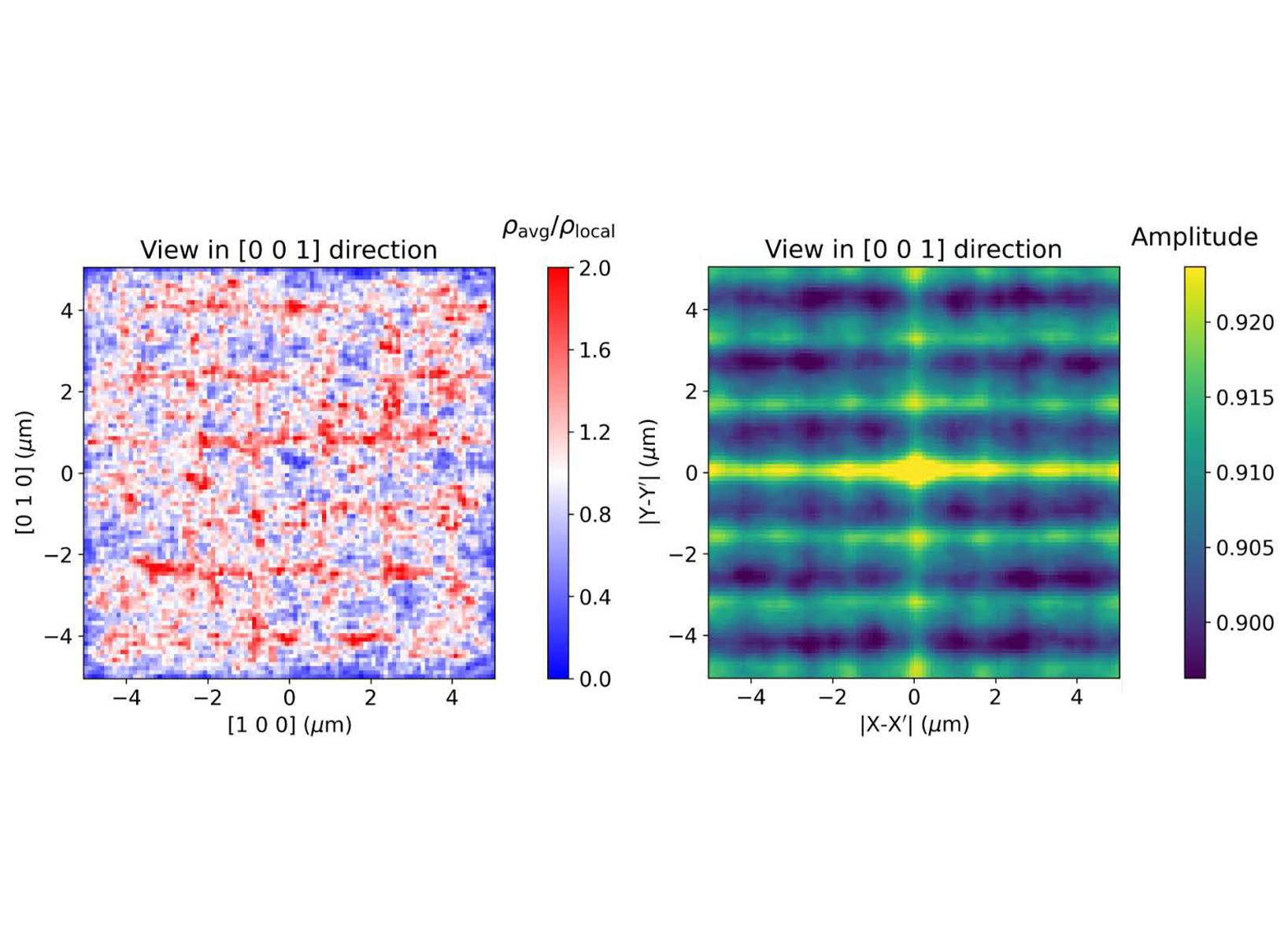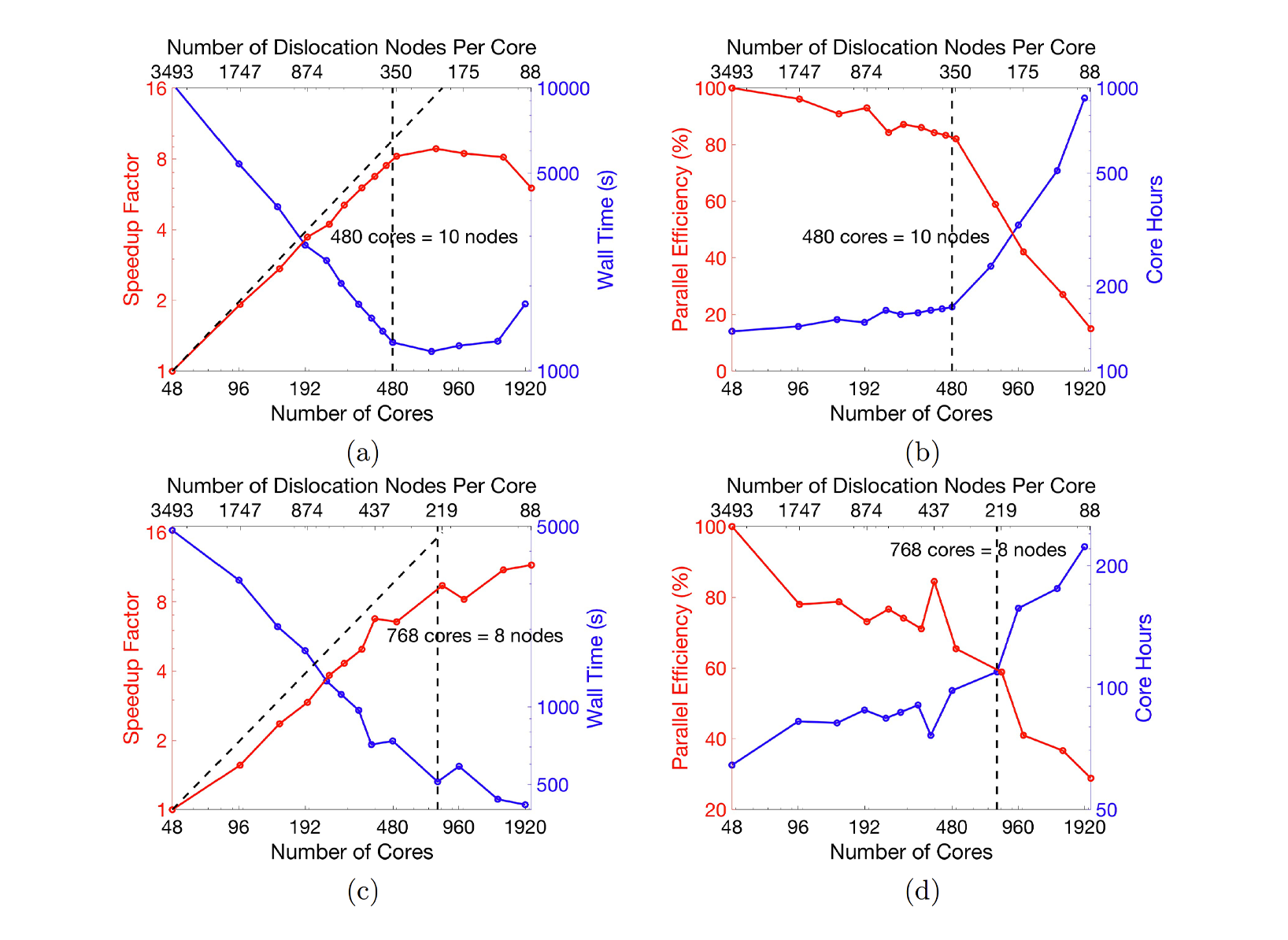Project
Microscale plasticity during rapid cool-down in Laser- Based Additive Manufacturing
Introduction: Additive manufacturing with Laser Powder Bed Fusion (PBF- LB/M) allows the generation of three-dimensional parts through layer- by-layer melting and solidification of metal powder. Compared to traditionally manufactured components, such as in casting or forging, the microstructures of additively manufactured alloys is characterized by metastable cellular dislocation structures that are typically observed alongside chemical microsegregation. The method of Discrete Dislocation Dynamics (DDD) is a framework of meso-scale simulations that model the evolution of discrete defects in metals based on applied thermal and mechanical loads and are informed by lower-scale models (such as atomistic simulations) that formulate consititive laws for the mobility of discrete defects (such as dislocations) in various chemical environments. The discrete nature of these simulations require a significant computational effort, which would not be possible to manage without the computational support from the HPC. The objective of this project is to conduct preliminary studies that allow implementation and testing of the prediction of dislocation structure evolution during cyclic heating and thermo-mechanical loading during additive manufacturing of alloys with DDD. An additional objective is to evaluate the scaling of the used code on the CLAIX HPC system, that allow for estimating the code performance for an efficient use of the system. These objectives lay the foundation for a future study and NHR Normal proposal.
Project Details
Project term
December 12, 2023–June 11, 2024
Affiliations
RWTH Aachen University
Institute
Chair Digital Additive Production
Principal Investigator
Methods
To achieve the objective, we used large scale 3D DDD simulations, which allow for a detailed study of the microstructure evolution driven by thermomechanical residual stresses induced by the cool-down of PBF-LB/M processing on dislocation level. All DDD simulations conducted in this work employed an in-house modified version of the 3D DDD open-source code ParaDiS, which is modified to allow for atomistically informed dislocation interaction mechanisms. In this project, we conducted testing and scaling studies that will lay the foundation for a significant extension of the existing DDD simulation framework towards accurately predicting the microscale plasticity during Laser Powder Bed Fusion processing in a future study performed on the RWTH HPC systems. Focus was in particular placed on the implementation of dislocation interaction with the chemical environment, which is a necessary prerequisite to acheive the long term goals. To conduct the planned project project, the PI requested funds from DFG, for which a submission of a NHR Normal proposal is envisaged for implementation of the required simulation tasks if approval is granted from DFG.
Results
Figure 1(a) shows the voxelized dislocation density distribution predicted by the in-house DDD code ParaDiS relative to the total dislocation density. A heterogeneous dislocation accumulation along defined christallographic planes is evident, indicating that the implemented dislocation interaction works as intended. Figure 1(b) shows the amplitude of the 2D autocorrelation of the local dislocation density, from which a clear periodicity of the dislocation accumulation is evident. Figure 2 shows the result of the scaling test on CLAIX-2018 (a,b) and CLAIX- 2023 (c,d) by plotting the speedup factor and the wall time over the number of cores in Fig. 2(a,c) as well as the parallel efficiency and the total core hours over the number of cores in Fig. 2(b,c). Here, the parallel efficiency is calculated by relating the respective simulation walltimes to the simulation walltime obtained using 48 cores. A distinctively different behavior can be observed on CLAIX-2023 compared to CLAIX-2018. The speedup increases nearly linearly until about 450 cores on CLAIX-2018 and 768 cores on CLAIX-2023 with a parallel efficiency of around 90% on CLAIX-2018 and around 80% on CLAIX-2023. Above 480 cores the simulation performance stagnates and eventually decreases in case of CLAIX-2018, whereas the performance continues to increase on CLAIX-2023, albeit deviating
significantly from the ideal speedup.
Discussion
The results in Fig. 1 show, that the implementation of the dislocation interaction with the chemical environment conducted in the course of this project was successful and leads to expected results. The scaling tests on CLAIX-2023, shown in Fig. 2, show that the ParaDiS code used here for simulating the evolution of discrete defects in metals can be used efficiently on the CLAIX-2023 compute cluster up to a number of about 768 cores. The drastically better performance on CLAIX-2023 compared to CLAIX-2018 for more than 500 cores indicates a better utilization of the CLAIX-2023 compute platform. However, a slightly lower performance with lower core numbers on CLAIX-2023 compared to CLAIX-2018 suggests further optimization potential. This can include investigation and testing of different compilers and MPI libraries available at CLAIX as well as optimizing the runtime performance. In conclusion, this project showed that the in-house modified ParaDiS DDD code can be utilized efficiently on the CLAIX HPC compute platform for the envisaged application. In the long term, the prediction of the evolving dislocation structures and resulting mechanical properties during realistic additive manufacturing scenarios will be an important milestone in closing the gap between processing parameters, microstructure evolution, and mechanical properties.
Additional Project Information
DFG classification: 401-02 Primary Shaping and Reshaping Technology, Additive Manufacturing, 406-03 Microstructural Mechanical Properties of Materials
Software: ParaDIS
Cluster: CLAIX
 Figure 1: Voxelized dislocation density predicted by the in-house DDD code ParaDiS relative to the total dislocation density (a) and 2D contourplot showing the amplitude of the 2D autocorrelation of the local dislocation density (b).
Figure 1: Voxelized dislocation density predicted by the in-house DDD code ParaDiS relative to the total dislocation density (a) and 2D contourplot showing the amplitude of the 2D autocorrelation of the local dislocation density (b).  Figure 2: Plot of the speedup factor vs. the number of cores and the wall time (a,c) and parallel efficiency vs. the the number of cores and the total core hours (b,d) for CLAIX-2018 (a, b), and for CLAIX-2023 (c,d).
Figure 2: Plot of the speedup factor vs. the number of cores and the wall time (a,c) and parallel efficiency vs. the the number of cores and the total core hours (b,d) for CLAIX-2018 (a, b), and for CLAIX-2023 (c,d).